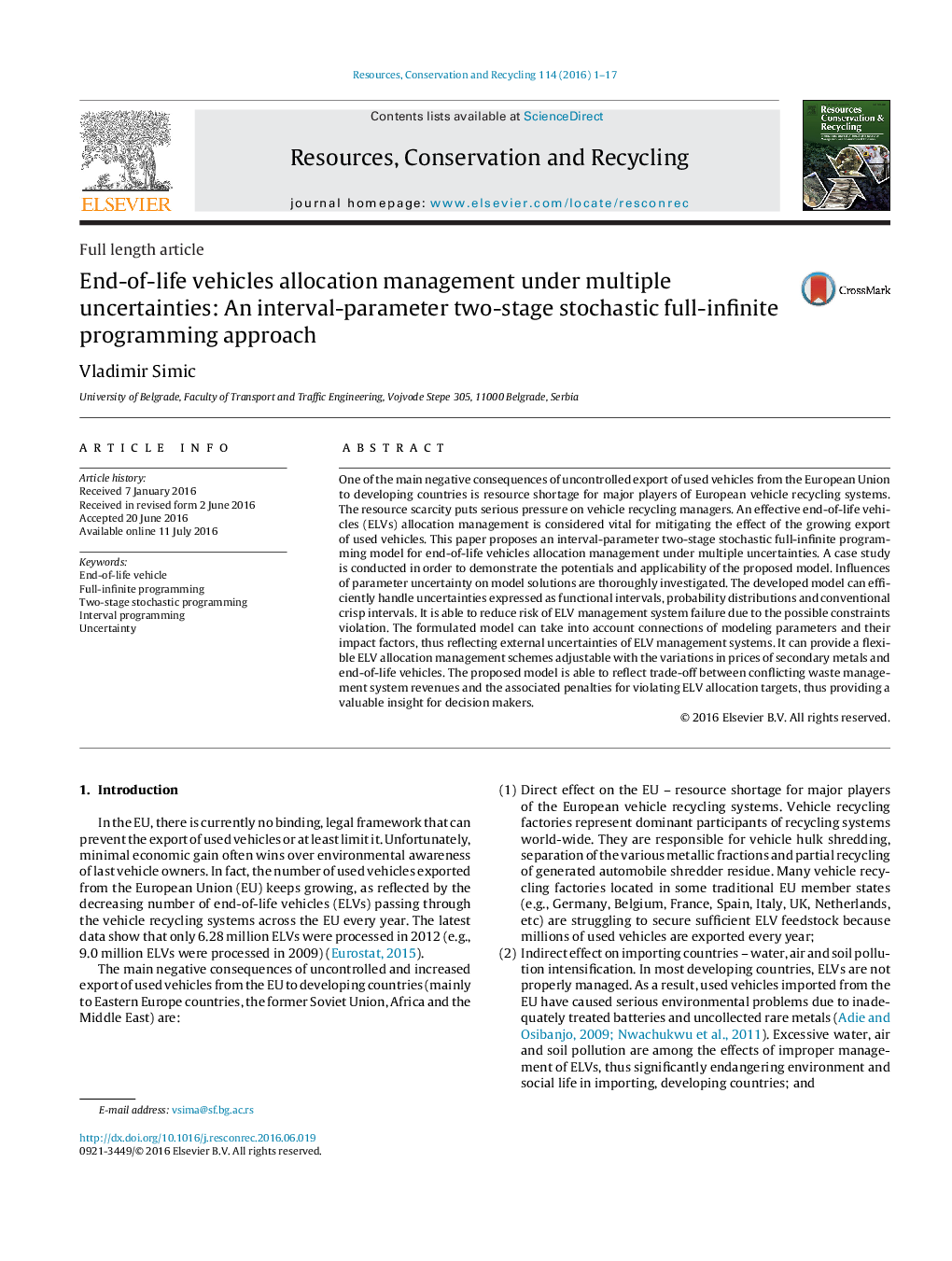| کد مقاله | کد نشریه | سال انتشار | مقاله انگلیسی | نسخه تمام متن |
|---|---|---|---|---|
| 1062658 | 1485677 | 2016 | 17 صفحه PDF | دانلود رایگان |
• An interval-parameter two-stage stochastic full-infinite programming model for ELV allocation management is developed.
• The model can handle uncertainties expressed as functional intervals, crisp intervals and probability distributions.
• The case study demonstrates the potentials and applicability of the proposed model.
• The model can reflect external uncertainties of ELV management systems.
• The model can help vehicle recycling managers in creating ELV allocation schemes under multiple uncertainties.
One of the main negative consequences of uncontrolled export of used vehicles from the European Union to developing countries is resource shortage for major players of European vehicle recycling systems. The resource scarcity puts serious pressure on vehicle recycling managers. An effective end-of-life vehicles (ELVs) allocation management is considered vital for mitigating the effect of the growing export of used vehicles. This paper proposes an interval-parameter two-stage stochastic full-infinite programming model for end-of-life vehicles allocation management under multiple uncertainties. A case study is conducted in order to demonstrate the potentials and applicability of the proposed model. Influences of parameter uncertainty on model solutions are thoroughly investigated. The developed model can efficiently handle uncertainties expressed as functional intervals, probability distributions and conventional crisp intervals. It is able to reduce risk of ELV management system failure due to the possible constraints violation. The formulated model can take into account connections of modeling parameters and their impact factors, thus reflecting external uncertainties of ELV management systems. It can provide a flexible ELV allocation management schemes adjustable with the variations in prices of secondary metals and end-of-life vehicles. The proposed model is able to reflect trade-off between conflicting waste management system revenues and the associated penalties for violating ELV allocation targets, thus providing a valuable insight for decision makers.
Journal: Resources, Conservation and Recycling - Volume 114, November 2016, Pages 1–17
